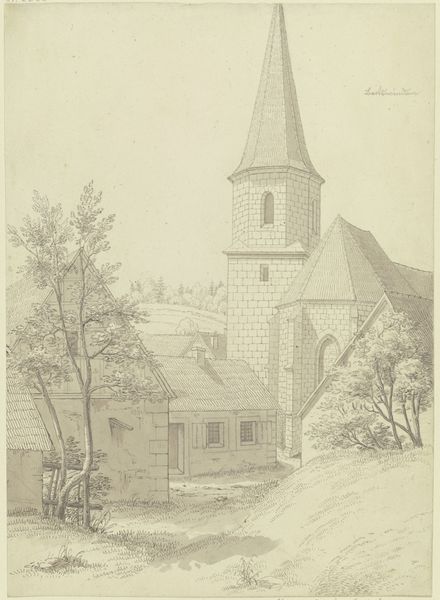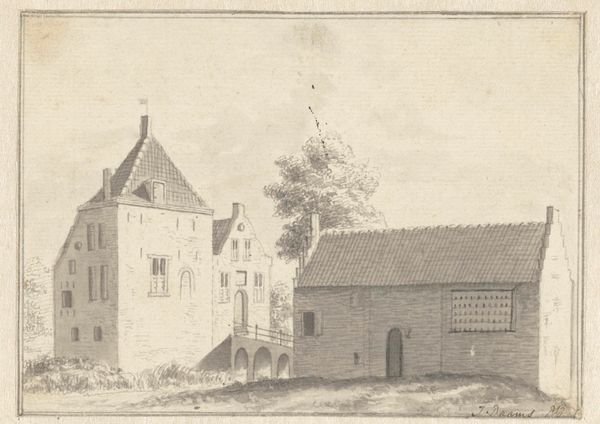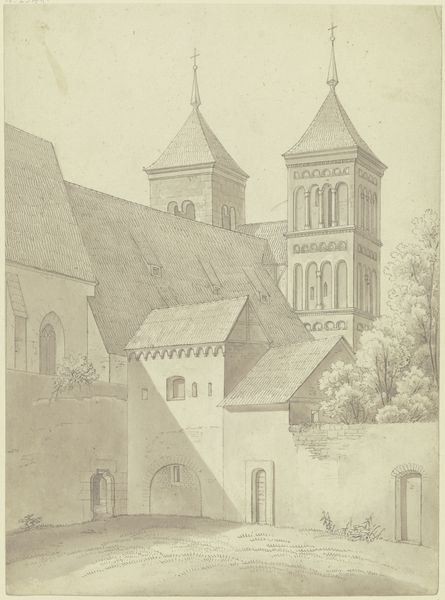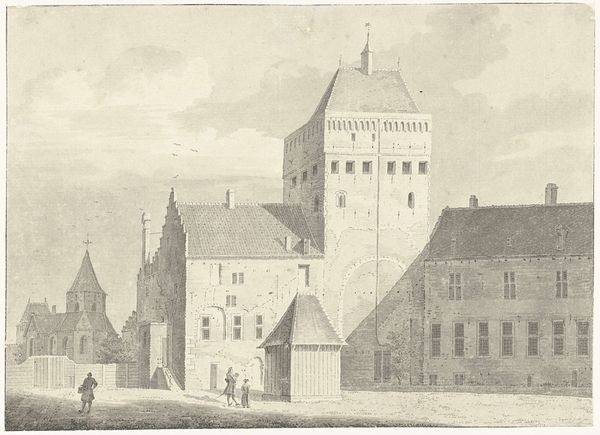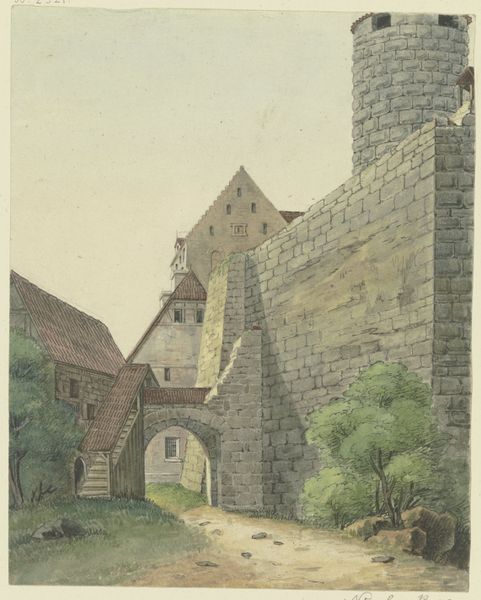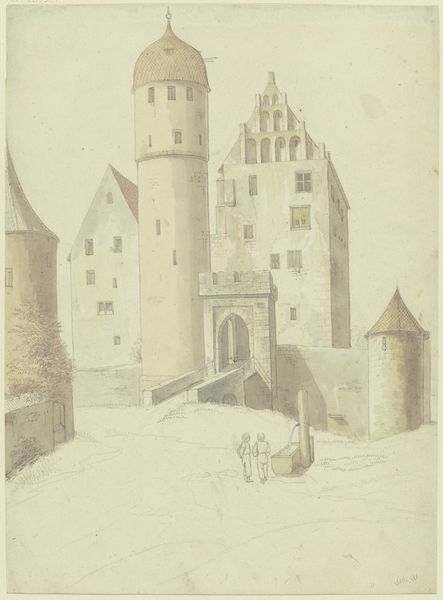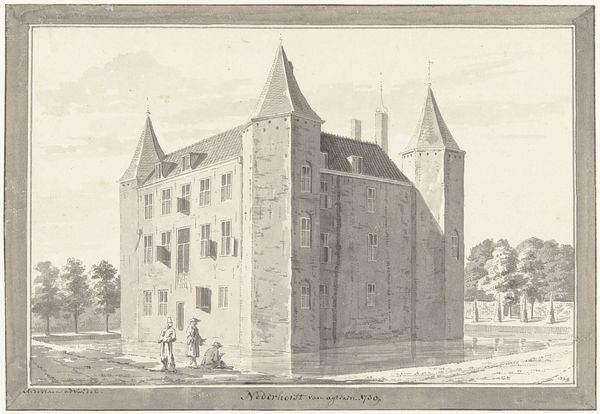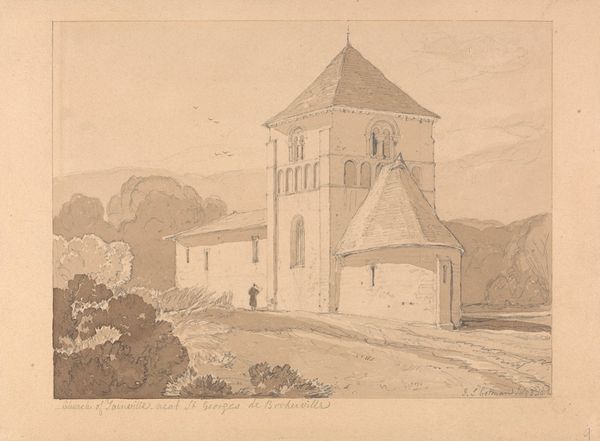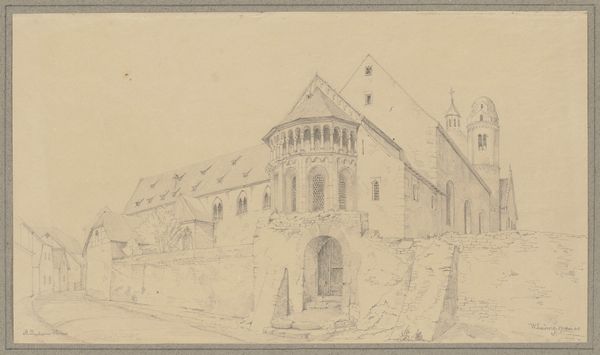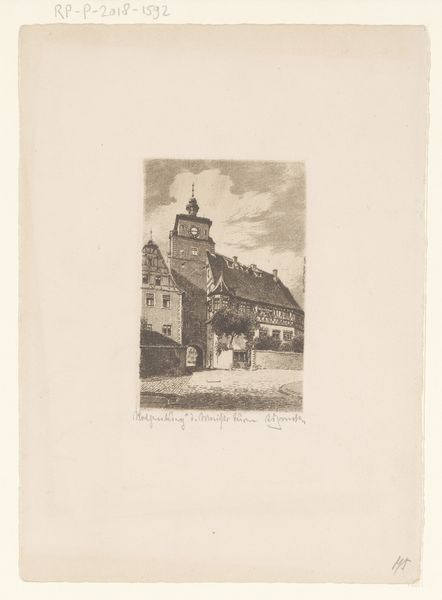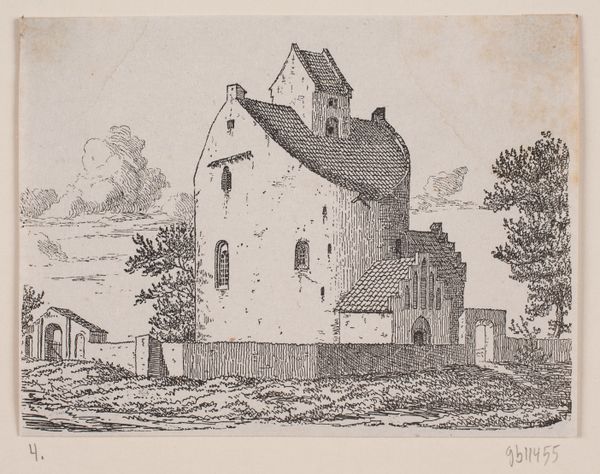
drawing, watercolor, architecture
#
architectural sketch
#
drawing
#
16_19th-century
#
landscape
#
watercolor
#
german
#
watercolour illustration
#
architecture
Copyright: Public Domain
Curator: This drawing, titled "Neuenmuhr Castle," offers a glimpse into the artistic practice of Karl Ballenberger, a German artist. Preserved in the Städel Museum, this piece provides insight into 19th-century architectural illustration. Editor: There's a ghostliness about it, isn't there? Like a half-remembered dream of a fortress. It’s as if the artist sketched not just the castle but its echo. Curator: Precisely. Architectural sketches of this era often served a dual purpose: documenting existing structures while also feeding into romantic notions of history and heritage. Think of the growing interest in medieval revival architecture during the 1800s. Editor: And I'm getting a whiff of Romanticism! The soft watercolors, the almost melancholic quietness. It makes you wonder about the stories hidden within those walls, battles fought, love affairs, and secrets whispered in the corridors. Curator: Indeed. The choice of watercolor as a medium lends itself well to the period's aesthetic sensibilities. It's less about precise documentation and more about evoking a feeling or mood, a sense of place tinged with nostalgia. Editor: It feels incomplete, almost… unfinished. Maybe that adds to the ghostly vibe? Like the artist was interrupted mid-creation, leaving us to fill in the blanks ourselves. Curator: Perhaps. Or it could suggest a deliberate aesthetic choice—inviting viewers to engage actively, projecting their own interpretations onto the image and maybe on our national idea of beauty and home. Editor: Well, I am actively engaged, alright! I’m dreaming up a whole tragic romance inside its walls right now. See how art turns us all into novelists! Curator: That imaginative connection, the capacity for art to spark storytelling—that is, ultimately, its greatest cultural significance and purpose. Editor: You know, thinking about it, maybe this 'ghostly' quality isn't unfinishedness, but timelessness. That castle, whether real or imagined, still stands, doesn't it? Even if only in our minds, fueled by glimpses like this. Curator: That's a beautiful observation—art holding memory is often truer than life itself. Editor: Exactly! Cheers to unfinished, haunted, beautiful memory castles.
Comments
No comments
Be the first to comment and join the conversation on the ultimate creative platform.
